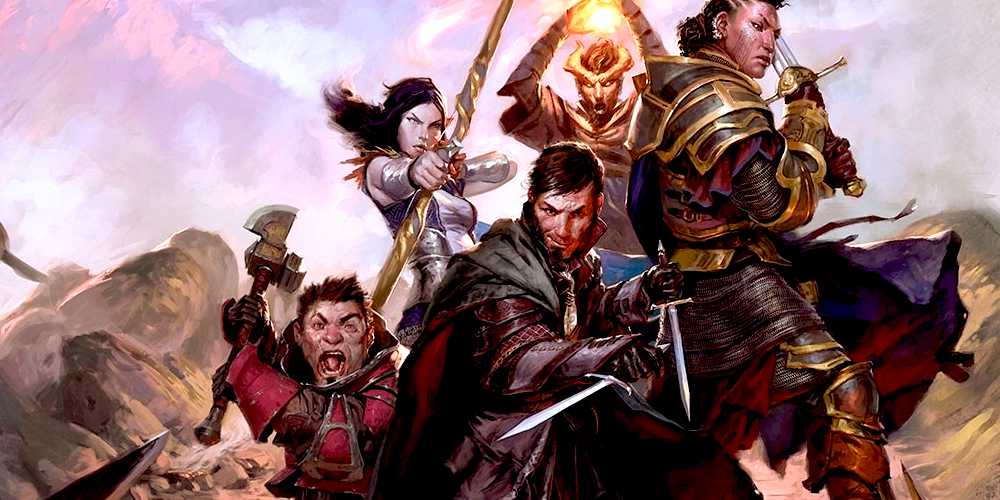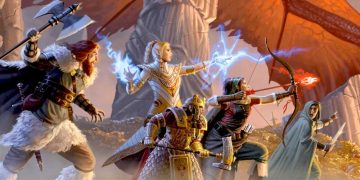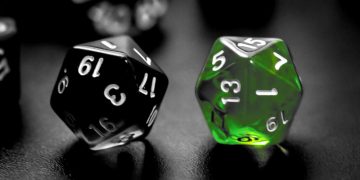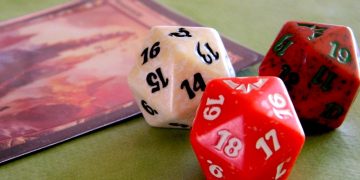Few classes in Dungeons & Dragons 5th Edition have the same potential for fun roleplay as the Warlock.
Warlocks are the keepers of dark secrets and mysterious origins, with a diverse range of powers and builds available to them.
But between choosing a patron and having limited spell slots, it can be a bit overwhelming to play a Warlock for the first time.
That's where this Warlock guide for beginners comes in! Here are some helpful tips for how to build and play a Warlock in D&D 5e.
This article is part of a series of D&D class guides for beginners. If you're interested in other classes, check them out as well:
- D&D 5e Barbarian Guide for Beginners
- D&D 5e Bard Guide for Beginners
- D&D 5e Cleric Guide for Beginners
- D&D 5e Druid Guide for Beginners
- D&D 5e Fighter Guide for Beginners
- D&D 5e Monk Guide for Beginners
- D&D 5e Paladin Guide for Beginners
- D&D 5e Ranger Guide for Beginners
- D&D 5e Rogue Guide for Beginners
- D&D 5e Sorcerer Guide for Beginners
- D&D 5e Warlock Guide for Beginners
- D&D 5e Wizard Guide for Beginners
Always Talk to Your DM First!
Few D&D classes put as much emphasis on the relationship between DM and player as the Warlock.
While Wizards get their powers from careful study and Sorcerers get their magic from bloodline heritage, Warlocks get their abilities by serving a patron entity—and most likely it's the DM who's going to be on the one playing that entity.
Your first step when building a Warlock is to make sure your concept sounds fun and agreeable to your DM, because it will create a bit of extra work for them too.
They'll get to directly control how your patron interacts with you and what tasks they require from your character in order to continue growing in power, and your communication will make it easier for the DM to serve plot hooks to guide you through your growth.
Tip 1: Choose Your Patron Carefully
When playing a Warlock in D&D 5e, your patron is the source of your character's powers, so it's fair to say that your choice of patron will be the most important choice you make as a Warlock.
Not only does your patron determine what bonus spells and abilities you get access to as you level up, but your relationship with your patron will define your role in the party.
For example, choosing a Celestial patron will grant you access to useful healing abilities, while an Archfey patron will grant you the power to influence the minds of your enemies.
You'll have to research what patrons are available to your campaign—discuss it with your DM for suggestions and approval—but make sure you pick a patron who not only fits your character's roleplay and intended playstyle, but also serves the needs of the party.
Tip 2: Select Versatile Cantrips That Scale
Warlocks don't have many spell slots, especially at low levels, so I suggest putting more thought into your cantrips selection (cantrips can be cast at will without using up a spell slot) and making the most of the powerful cantrips available to Warlocks.
Cantrips are your bread-and-butter as a Warlock since you'll be able to spam them in and out of combat. As such, it's important to pick a variety of cantrips that serve in all kinds of situations and encounters. Variety will also prevent your character from feeling stale.
Eldritch Blast is easily the best damage-dealing cantrip in D&D 5e because its damage scales with your level, meaning it'll remain useful even into your higher levels. Taking it means you always have something useful to do in combat even when you've burned through your limited spell slots.
True Strike should be avoided at all cost (unless you need it for roleplay reasons, or a very specific combination). With it, you use 2 turns to maybe hit once with 2d20. Without it, you can attack 1d20 each turn and maybe hit twice. That it uses a full action is what makes it a pretty useless cantrip for Warlocks.
Tip 3: Conserve Your Spell Slots
Warlocks get far fewer spell slots than any other class, so they can't spam powerful magic in the way that Wizards or Sorcerers do.
For comparison, a 10th-level Warlock still only has 2 spell slots, whereas 10th-level Wizards and Sorcerers both have 15 spell slots (divided between their spell levels).
This means that a Warlock can only cast one or two of their most powerful spells in an encounter—and your spell slots can only be recovered with short rests and long rests.
Never waste your spells on a whim. You need to pick and choose the right time to make your moves, and it's better to use a cantrip if you aren't absolutely sure that casting a spell is the right move.
The upside to the Warlock spell slots limitation, however, is that you can recover your spell slots with a short rest, whereas every other class can only recover spell slots with a long rest.
This means you're mostly refreshed after an hour of rest while the rest of the party needs a full eight-hour sleep to be back to fighting shape.
Tip 4: Use Your Invocations to Specialize
In addition to magic, Warlocks get access to powerful Eldritch Invocations that can further customize your character and make you stand out from others of the same class—even the same patron.
For example, Agonizing Blast increases the damage dealt by Eldritch Blast; Mask of Many Faces lets you cast the Disguise Self spell whenever you want without using a spell slot; One With Shadows lets you become invisible when standing still in dim light.
As you level up, the number of Eldritch Invocations that you know will quickly outpace the number of actual spells you have. That means, alongside cantrips, your choice of Eldritch Invocations will have the most impact on what you can do most of the time.
It's worth noting that you can replace one Eldritch Invocation with another every time you level up. Pick carefully because you'll be stuck with your selections until your next level up, but don't fret too much because you can always swap out later.
Tip 5: Pick the Right Pact Boon
There's one more feature of Warlocks that lets you customize your character to stand out from other Warlocks: your Pact Boon.
At 3rd level, every Warlock gets to choose between three Pact Boons, and these Pact Boons grant special features (or boons) that represent your relationship (or pact) with your patron. Once you select a Pact Boon, it can't be changed.
For magic specialists, the Pact of the Tome lets you diversify your arsenal further by granting three more cantrips.
For front-line fighters, the Pact of the Blade lets you summon a special bonded pact weapon to your person at any time.
For those who want a companion, the Pact of the Chain grants a special improved familiar that you can use to scout ahead (see through its eyes) or cast spells from a distance.
Your choice of Pact Boon also unlocks special Eldritch Invocations down the road, so it's an important decision that will have a huge and lasting impact on your character's adventuring career.
Warlocks Are Fun, Versatile, Not Easy
No other 5th Edition class is as diverse as the Warlock. It can fit into almost any role within a party, but only if you make the right choices from the beginning—and there are a lot of choices you can make, both when building your character and while playing them.
No two Warlocks are ever really the same, so have fun and enjoy the roleplay hooks that come from owing your power to an otherworldly patron who's directly under the DM's control. I'm sure nothing bad can come of that, right? Right???




